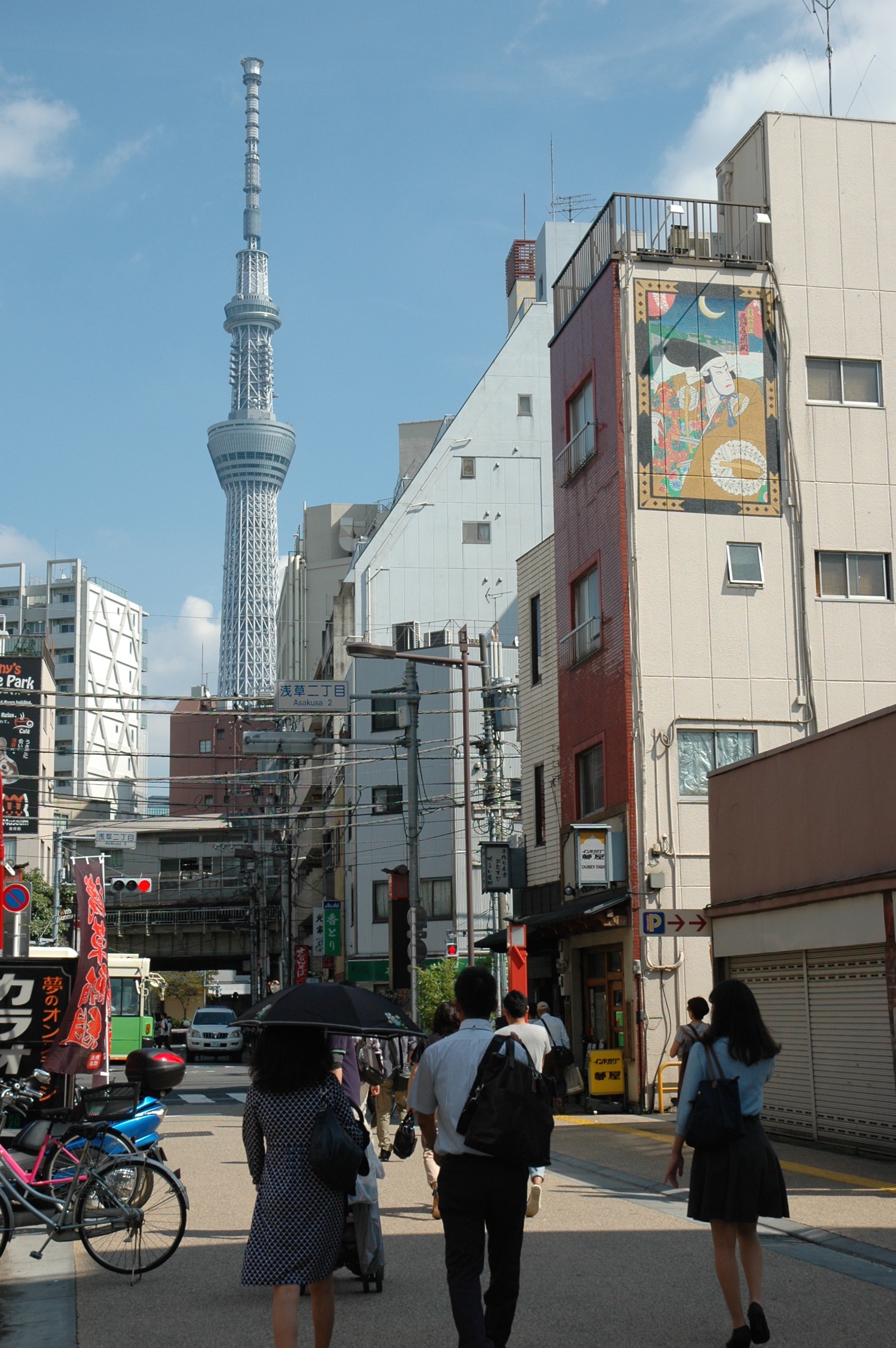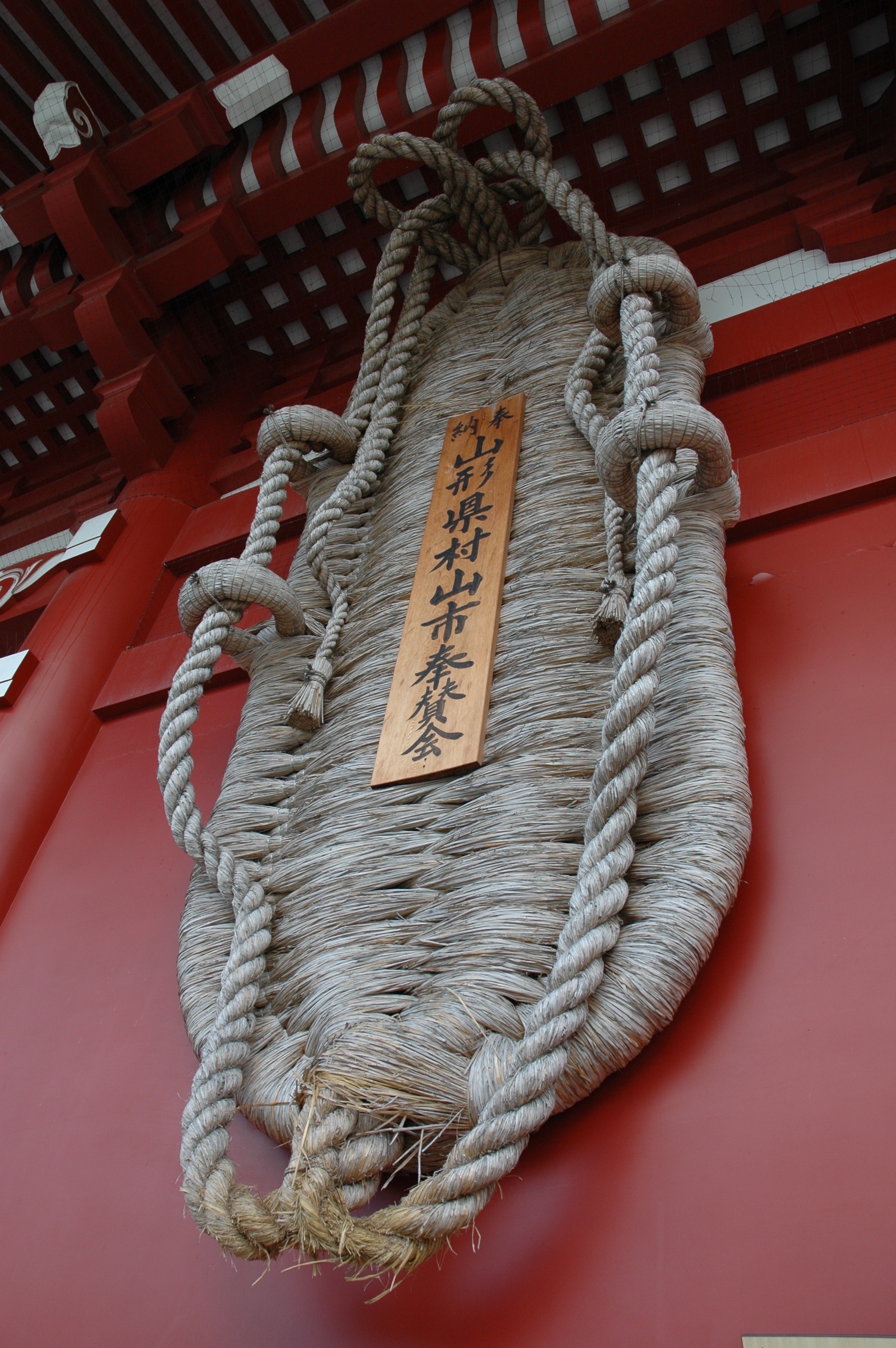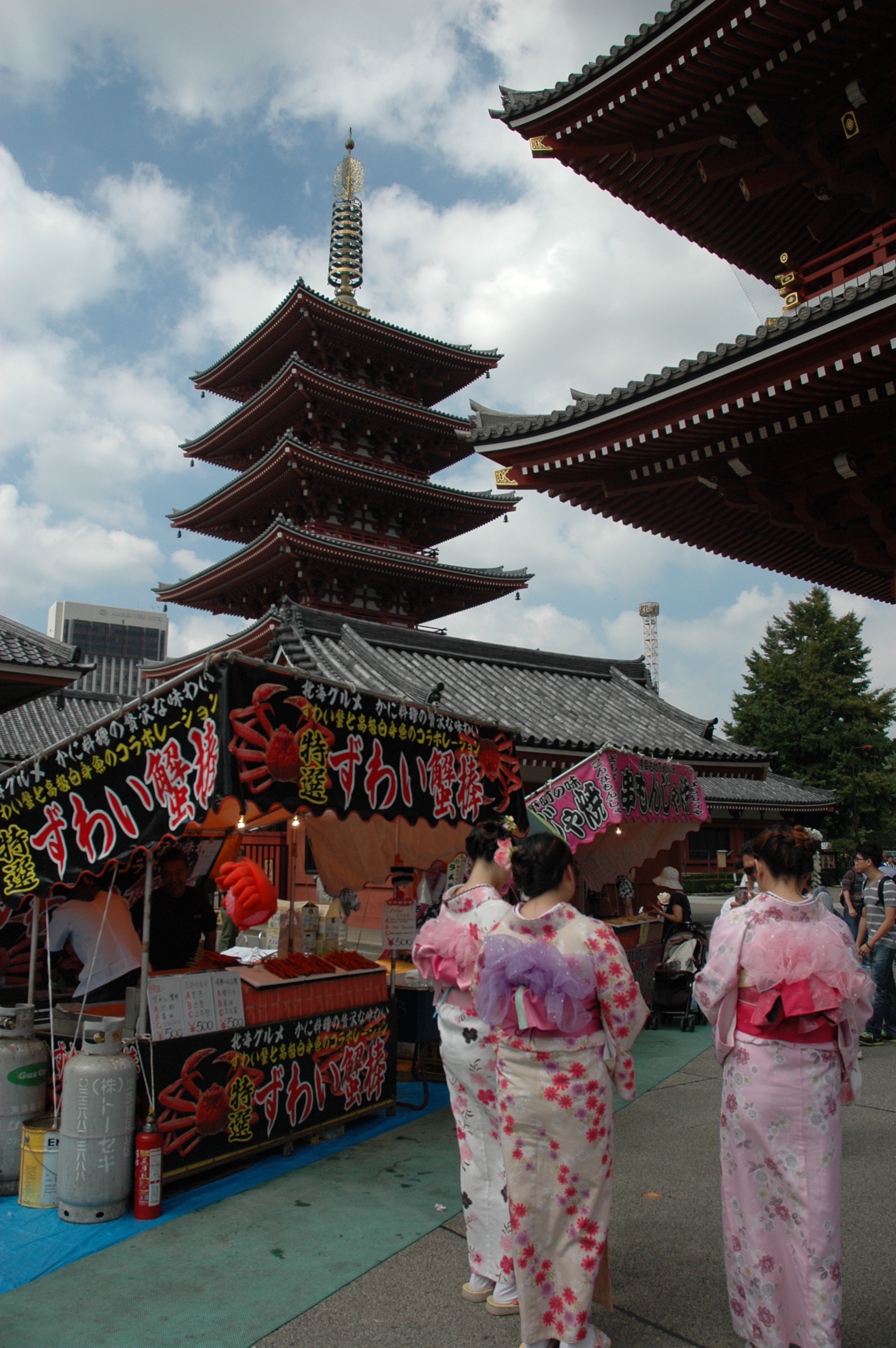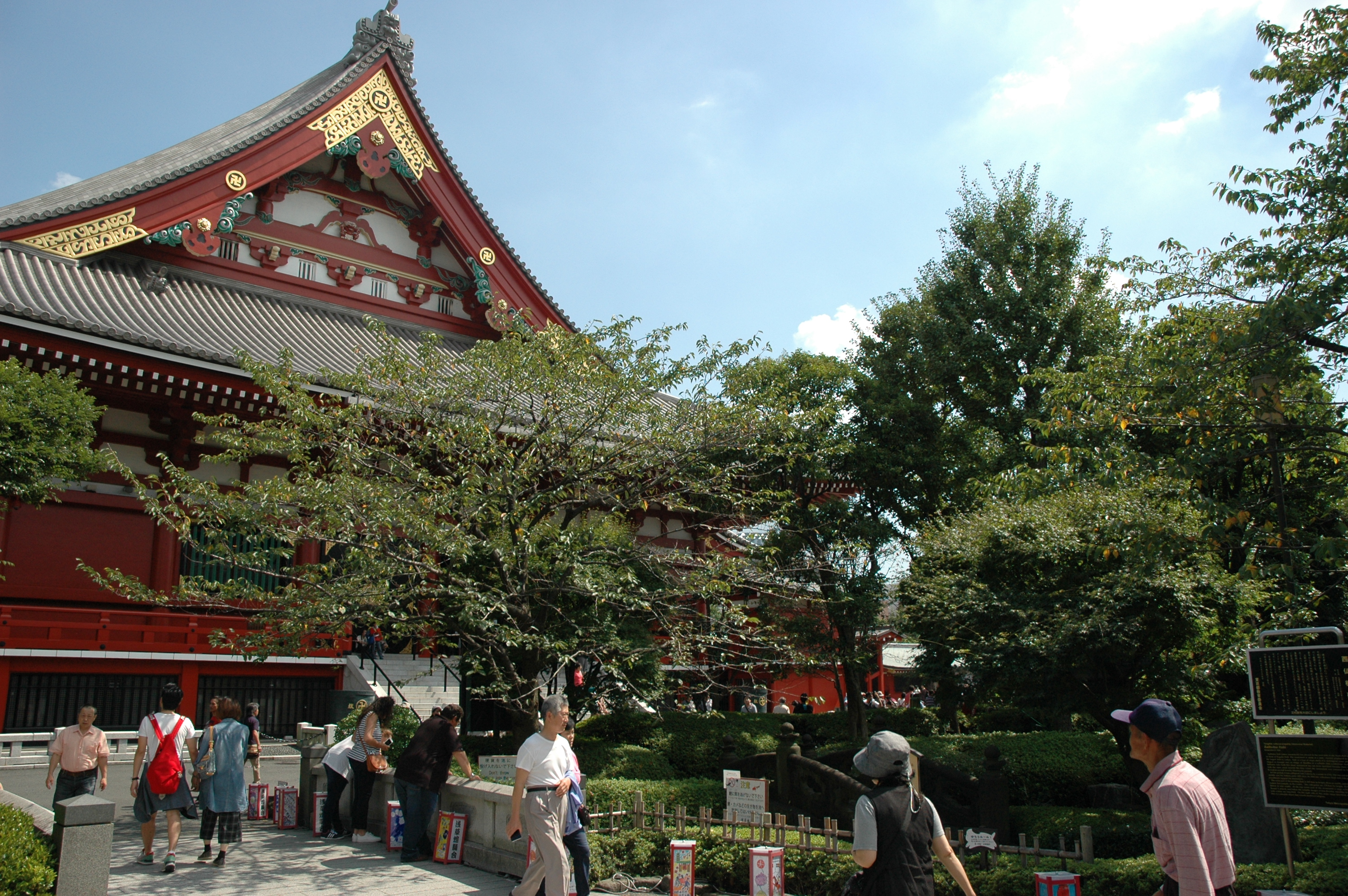Asakusa is one of the places in Tokyo that still comes to mind when I think of my very first trip to Japan as a six-year old myself. I have been back many times since and I would still highly recommend it to anyone going to Tokyo for the first time or those on a repeat visit.
Senso-ji and the area surrounding this prominent Buddhist temple are the key attractions to Asakusa. The temple was first built in 628, the main building you will now see was rebuilt in the 21st Century after extensive bombing during World War II. It was built to house a golden image of the Kannon (the Goddess of Mercy) which, according to legend, was pulled out of the nearby river. Sadly, the image is not on public display (although its existence appears to be somewhat legendary).
The best way to see Senso-ji is to arrive by subway via either the Ginza or Asakusa lines at Asakusa Station (not to be confused with the Asakusa Station on the Tsukuba Express) and walk west along Kaminari-mon-dori. When you get to the intersection with zebra crossings going in all directions, take a minute to look all around you. This is quintessential Tokyo. The grand entrance to the grounds of Senso-ji, Kaminari-Mon (literally, Thunder Gate) will be to your right, the new architecture of the Asakusa Culture Tourist Information Center will be to your left, and looking over your shoulder you will see the unmistakable form of the imposing Tokyo Sky Tree.
If you have time, drop into the Asakusa Culture Tourist Information Centre to pick up lots of information and even discount tickets and most importantly, go up to the observation deck at the top of the building for a free view over Senso-ji and the Nakamise shopping street.


Once you’re back on the street, go through the red Kaminari-Mon gate with its impressive statues, Raijin (the god of thunder) on the right and Fujin (the god of wind) on the left, and walk along the shop-lined Nakamise-dori. Depending on the time of day, you may be able to amble along and browse at the stalls, or you may be swept along by the crowd.
Continuing along Nakamise-dori, you will come to the massive Hozomon gate. Take a moment to appreciate the fearsome guardian deities on either side of the entrance. Once you’ve gone through the gate, have a look at the pair of enormous straw sandals (O-waraji) on the rear of the gate. These 4.5 m high sandals were constructed by 800 citizens from Murayama City over one month, using 2500 kg of straw. They were donated to the temple to ward off evil.
Once you pass through the gate, you will see the main temple building in front of you and a 5-storey pagoda to your left. As you approach the main building, you will pass smaller buildings. To your left you can buy amulets and thanksgiving tokens, to your right, fortunes.Before arriving at the temple, you will find a large covered vessel full of ash and smoking bundles of joss sticks. Visitors and worshippers alike are encouraged to waft the smoke over themselves as a cleansing ritual before entering the temple. To the right, you will also see a dragon-spouted fountain lined with metal ladles. This is another feature of Japanese temples and part of the cleansing ritual to take some water to rinse the hands and the inside of the mouth (don’t drink directly from the ladles!).
I encourage you to go up the stairs and have a look inside the temple, approaching with a spirit of calmness and respect. Be aware that a service may be in progress at the time of your visit, and that while you may observe the proceedings quietly, it is generally not appropriate to try to join in.

While you’re at Senso-ji, be sure to have a look around the gardens and other buildings in the precinct.
For a glimpse into the merchant side of old Tokyo (or Edo, as it was once known), talk a stroll along Denbo-in-dori which you’ll find running perpendicular to Nakamise-dori and about three-quarters of the way along it. The entrance to it is marked by a painted red gate with green roof and four stylised kanji (Chinese characters) painted on a large brown sign.
Best access: Subway Asakusa Station, Ginza Line (orange) or Asakusa Line (light pink) (exit 1)
Cost: Free


